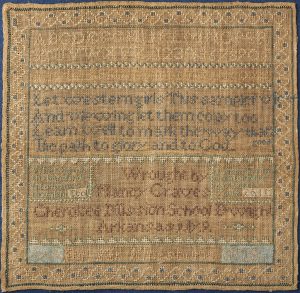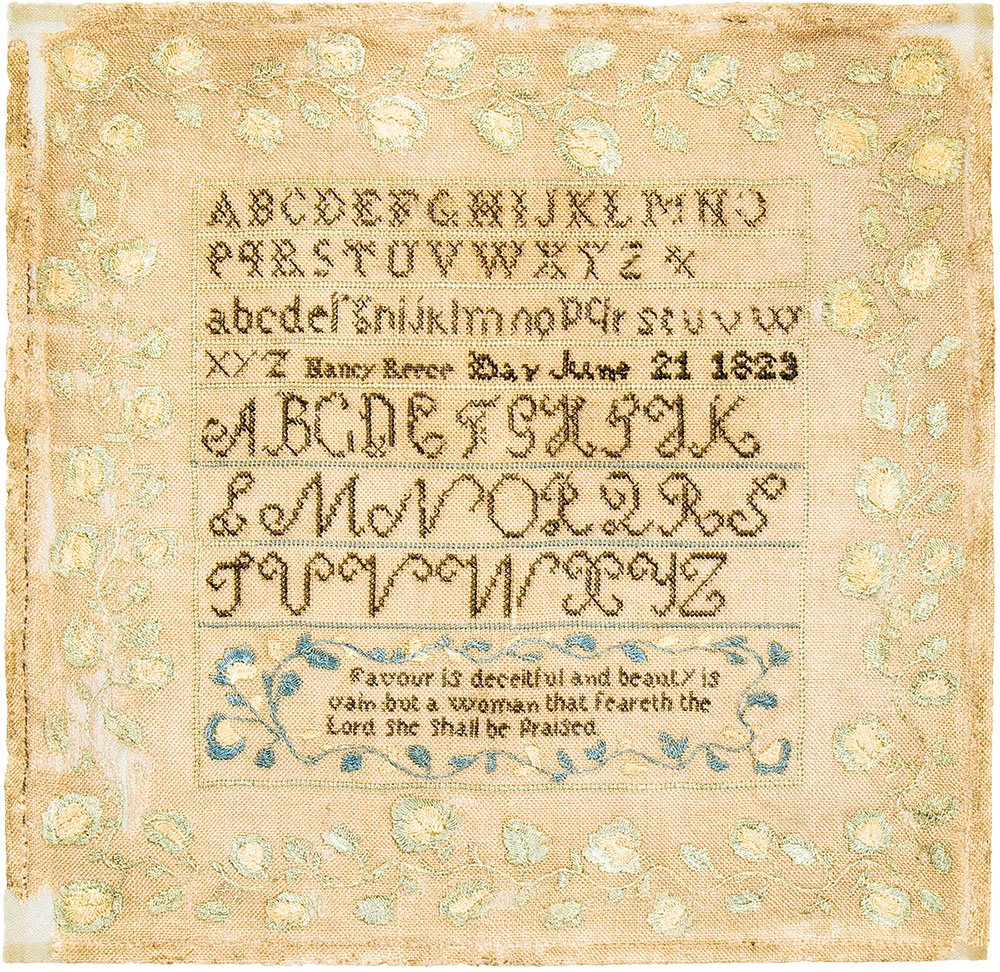Background
In the early days of the new nation, upper-class white womanhood came to be the standard definition of the ideal “American” woman. Women of all races and social classes were expected to strive to live their lives as close to the example of elite white women. Women who did not fit this pattern were ridiculed.
Free Black parents wanted their daughters to master the skills taught to white girls to demonstrate their equality in a deeply racist society. Black educational institutions like the African Free School taught young Black girls needlework, academics, and social customs. Wealthy men, like Pierre Toussaint, hired private tutors to teach their daughters music, dancing, and drawing. Mastering the same skills as elite white girls demonstrated that Black girls had equal amounts of talent and intelligence.
In the western territories, white missionaries educated Native girls as they would white girls, but their intentions were not as noble. They taught Native girls to be like white girls to erase Indigenous culture and make it easier for white settlers to claim lands held by Indigenous communities.
About the Image
Rosena Disery made her sampler at the African Free School when she was 15 years old. The sampler demonstrated both her skill with a needle and the moral education she received at school.
Cherokee girl Nancy Reece produced her sampler at the Brainerd Mission School when she was eight years old. Nancy’s sampler features a passage of text from the Bible. The U.S. government supported mission schools like Brainerd located in modern-day Tennessee. The government believed converting Indigenous people to Christianity was an effective way to convince them to abandon their traditional ways of life.
Cherokee girl Ku-To-Yi, known as Nancy Graves, was 11 years old when she made her sampler. She was living in Arkansas because the U.S. federal government forced the Cherokee to leave their lands to make space for white settlers. Ku-To-Yi’s sampler features a short poem telling any young Native woman who sees it to follow her example and adopt white cultural practices. It reveals that the samplers made at mission schools had two purposes: to demonstrate the maker’s skill and advertise the benefits of assimilation.
Vocabulary
- African Free School: A school in New York City that provided education for free Black children.
- assimilation: The process of adopting a new culture in order to fit in.
- Cherokee: One of the original Native nations that lived in the American Southeast. Despite 19th-century attempts to destroy it, the Cherokee Nation still exists in Oklahoma and North Carolina.
- Federal period: The early years of the United States, usually defined as 1790–1830.
- mission: When a religious group sends representatives to a foreign community to teach the people there about their beliefs and convert them to their religion.
- sampler: A work of art made from thread and fabric. Samplers were made to showcase a girl’s or woman’s needlework skills.
Discussion Questions
- What do these samplers reveal about the education of Black and Indigenous girls in the Federal period?
- What do you think it would be like to create a sampler? What does that tell you about the lives of young girls?
- How was education a tool of cultural assimilation in the Federal period? Why is it important to talk about this aspect of history?
Suggested Activities
- APUSH Connection: 4.9 The Development of an American Culture
- Give students a needle, embroidery floss, and fabric so they can experience how challenging the art form of making a sampler is.
- To learn more about the history of samplers and girls’ education, see Symbols of Accomplishment.
- To learn more about the Brainerd Mission and the education of Native girls in the Federal period, see Life Story: Lydia Carter.
- To help students better understand the Federal Period’s ideals of womanhood, see Republican Motherhood.
- Ask students to compare the education being offered to Black and Indigenous girls with the new educational opportunities available to white girls in this time. What accounts for these differences? How will this shape race and class relations in the new nation?
Themes
AMERICAN IDENTITY AND CITIZENSHIP









